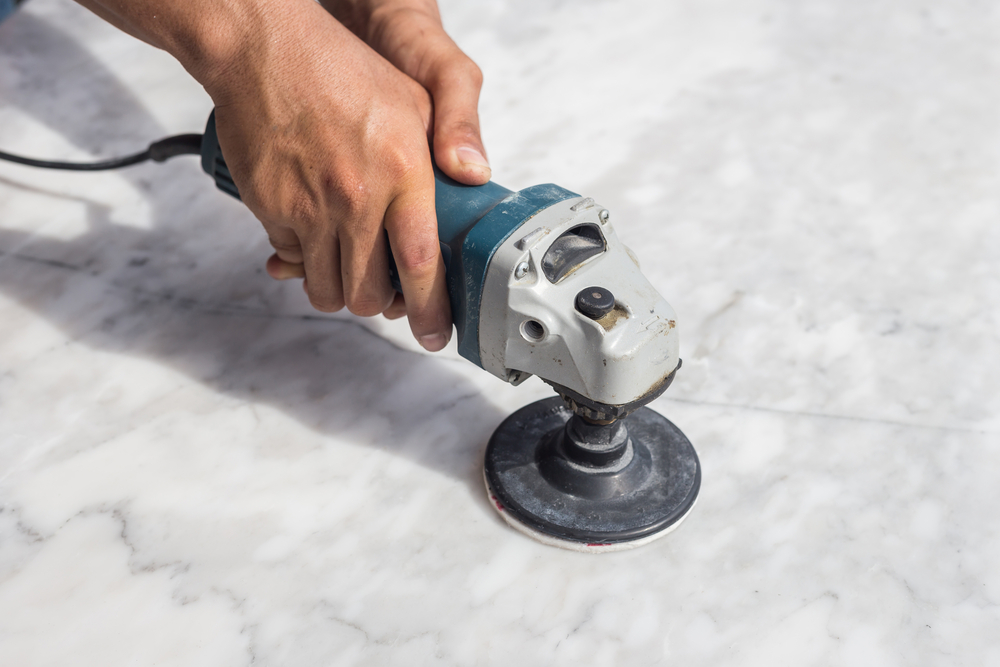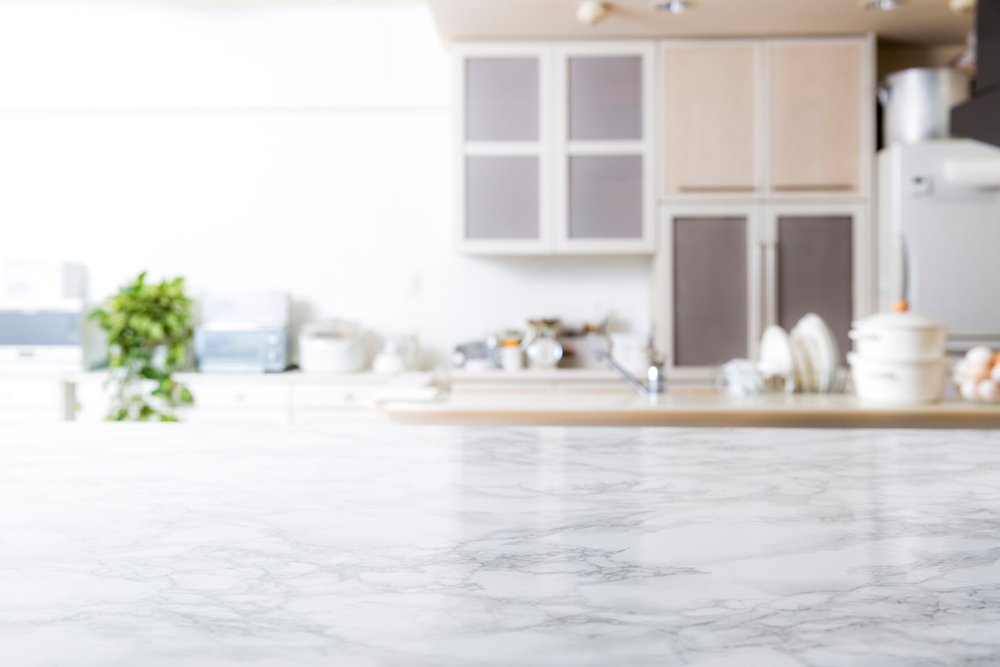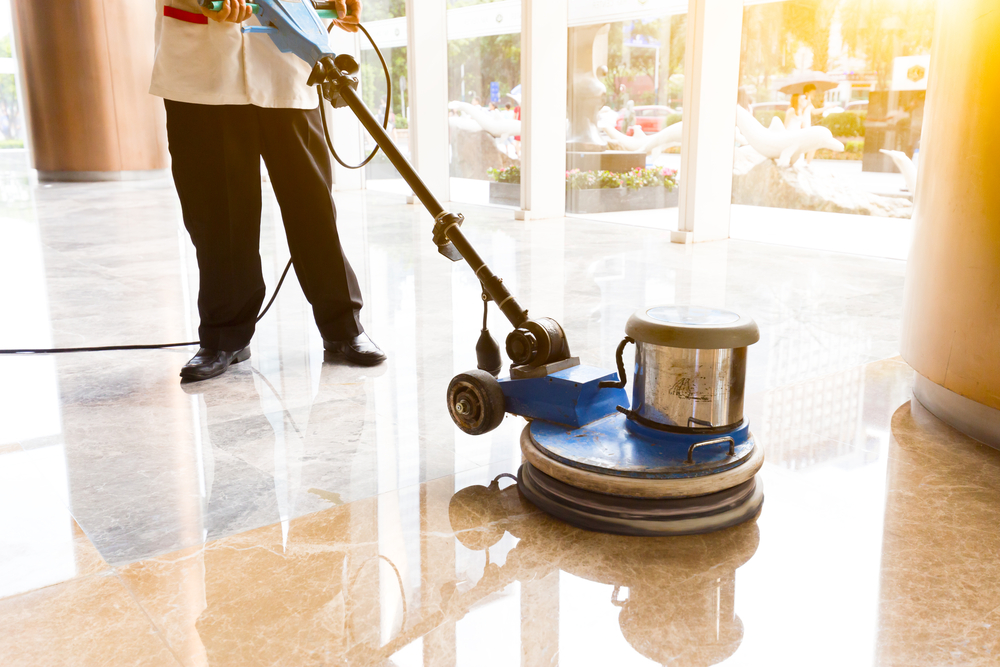Marble surfaces are fantastic to look at, with their intriguing patterns and wonderful shine. They can be a great addition to your home or office, and have the ability to class up any area. However, marble surfaces can also be fairly high maintenance and require regular polishing if you want to keep them shiny.
If you own marble and want to know exactly how to polish it, you’re in luck! In this article, we will discuss the benefits of having marble surfaces, the materials you need to polish them, and give you a detailed step-by-step guide that instructs you on how to keep your marble as shiny as possible.
Materials Needed to Polish Marble

Being equipped with the proper materials can help you clean and polish your marble surfaces as efficiently and safely as possible.
Stone Cleaner
Before you get to work polishing your marble, you will need a cleaner. You can invest in something like a stone cleaner (make sure to check with the marble manufacturer on their recommendations for a cleaner), or you can use a mixture of baking soda and water (3 tablespoons baking soda to a quart of water).
Try to avoid using a generic cleaning product, as many of these are not designed to clean marble and can instead create a buildup of product, leaving a residue on your marble that takes away from its shine.
Polishing Powder
The most important step in polishing is the addition of polishing powder. You can use a store-bought industrial cleaning product (again, check to make sure of what your marble manufacturer recommends), or you can create your own using crushed chalk and a damp cloth.
Cleaning Rags
Soft microfiber cloths are the best for cleaning marble, but you can also use cotton cleaning cloths as long as they are not too scratchy or abrasive. Never use harsh scrubbing materials such as stainless steel scour pads or other metal material, as these will damage the marble surface.
Step-by-Step Guide for Polishing Marble Surfaces

This step-by-step guide for polishing your marble surfaces is just the thing to help you get your marble as shiny as possible.
- Before polishing, wipe your counters clean with a dry cloth. Make sure there are no liquids, spots of dust, or food that can mix with the cleaner or polishing powder.
- If you are using a baking soda and water solution, mix that up and then apply it to one section of the marble. If you are using a store-bought cleaner, apply that directly to one section of the marble, according to the instructions on the product.
- Slowly buff out the cleaner in a circular motion using a microfiber or other soft cloth.
- Once it is buffed out, apply your cleaner to the next section of the marble and then repeat the process.
- If you are using a baking soda solution, allow it to sit for 3 to 6 hours before wiping it off completely with a damp cloth. For a store-bought cleaner, follow the removal instructions on the product.
- Once the counter has been cleaned completely, apply your polishing powder to a small section, following the product instructions for application and removal. If you are using chalk, crush it up and apply it to a small section with a damp cloth, buffing in a circular motion. After it is applied to an entire section, use a different damp cloth and wipe it off, completely removing it.
- Polish the entire counter in this manner, buffing the polishing product into the marble and then removing it section by section. Make sure to check the instructions on whichever store-bought product you are using to ensure you don’t damage your marble.
- After the marble has been completely cleaned and polished, you can sit back and enjoy the shine, or you can follow up with a sealant to further protect the shine of your marble.
When polishing your marble surfaces, you shouldn’t try to tackle the whole area at once. Work in small sections and take your time in cleaning and polishing. This will allow you to give your full attention to each section or marble and ensure it is cleaned and polished to the best of your ability. It may seem like more of a time commitment, but it is worth it to ensure the marble is taken care of.
You should be polishing your marble every 3 to 6 months and will usually want to follow up with a sealant, especially if you did a very in-depth polishing and cleaning session.
Polishing Pro Tips
These pro tips can keep your marble looking as good as the day it was installed.
Seal Regularly
No matter whether you have marble countertops or flooring, you should make sure that you seal it on a regular basis. Treating your marble with a sealant will help it maintain its finish, stay more stain-resistant, and keep up a high level of shine, leading to less work polishing and cleaning it in the long run.
When applying a sealant to your countertop, you should work in small sections, much like when polishing, and should continue to buff out the sealant until the marble is shiny and dry to the touch; any stickiness or tackiness indicates the sealant has not been properly applied.
You can reseal the marble every time you clean and polish it, but you should be applying it at least every 6 months for countertops and every 12 months for flooring.
Consider Using a Polishing Kit
When polishing your marble, consider using an electric tool such as this one. Polishing tool kits can help to take the elbow grease out of polishing your marble and give more of a shine to it than you could ever achieve by hand. If you are serious about polishing your marble or have marble floors to polish, you may want to consider an electric tool as an investment.
Keep in mind, however, that you should only be using a polishing tool that uses soft cotton or microfiber pads. Never use anything too abrasive or anything with metal in it, as this will scratch the surface of your marble.
Don’t Be Afraid to Call an Expert
If you aren’t sure where to begin when polishing your marble countertops or you have a large amount of marble flooring that needs polishing, don’t be afraid to call an expert for help. It may cost more than doing it yourself, but if you want to ensure that your marble stays in good condition, a professional can be a good investment.
A professional can also help you properly apply sealing treatments to your marble, keeping it in top condition.
Protecting Your Marble Surfaces

As we discussed above, sealing is the best thing you can do to protect your marble surfaces. However, you should also be cleaning up any stains, especially acidic ones regularly, in order to prevent the marble from being damaged.
You will also want to avoid products with acetone in them, as they can damage the finish on cultured marble, though they are fine for use on natural marble. Make sure to understand which type of marble you are working with before you get to work cleaning and polishing it. You should also be checking with the marble manufacturer for their recommendations on cleaning and other maintenance products.
The Benefits of Marble Surfaces
Sturdy and durable, marble has long been the choice in many homes and businesses to keep countertops and floors looking elegant and well-kept. The shiny surface of marble can make your space appear bigger, giving your kitchen an airy feel. Marble can withstand a lot of damage and is very pleasing to the eye, making it worth the somewhat expensive cost of installing marble surfaces in your home.
While there are many benefits to marble, if you have marble in your home or you are considering installing it, you should also keep in mind that marble can be quite a high maintenance material. It is especially porous, absorbing stains easily, and the finish can be damaged by exposure to highly acidic materials, such as lemon juice or coffee.
Any stains on marble will have to be cleaned immediately, and the marble will need to be resealed every year or so to keep it looking its best.
Put the Shine Back in Your Marble
Marble surfaces are fantastic to look at and can really add to the beauty of a room. However, if your marble floor or countertops have become dull, it may be time to put some shine back into it. Polishing your marble is the best way to do this, but you should also remember to keep up with proper marble maintenance and regular sealing treatments to ensure your marble stays as shiny as the day it was installed.
